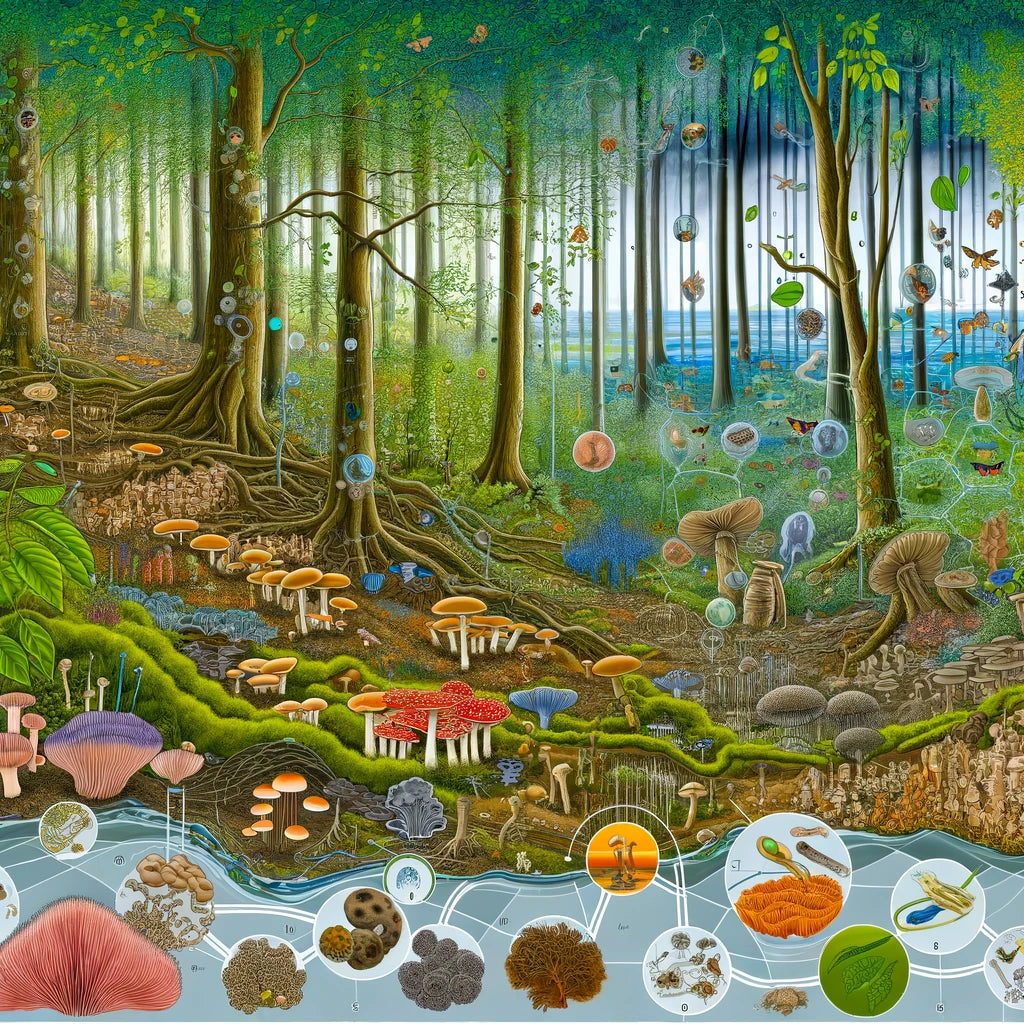Fungi, the hidden architects of ecosystems, are foundational to Earth’s biodiversity. Beyond their enchanting forms and ecological roles, fungi are crucial for the health and stability of the planet's ecosystems. This blog post delves into the expansive role of fungi in biodiversity, highlighting their critical functions, the threats they face, and the paramount importance of conservation efforts aimed at protecting these essential organisms.
The Pivotal Roles of Fungi in Ecosystems
Fungi are biodiversity's unsung heroes, performing numerous vital functions:
-
Decomposition and Nutrient Cycling: Fungi are master decomposers, breaking down organic matter, including hard-to-digest substances like lignin in wood, thereby recycling nutrients back into the soil and making them available for plant growth. This decomposition process is the backbone of terrestrial ecosystems, supporting the food web from the ground up.
-
Symbiotic Relationships: Mycorrhizal fungi form symbiotic associations with the roots of most plant species, enhancing nutrient and water uptake, offering protection against pathogens, and increasing resistance to environmental stresses. These relationships are not just beneficial but essential for the survival of many plant species, underpinning the health and productivity of forests, grasslands, and agricultural systems.
-
Biodiversity Support: Fungi contribute to biodiversity directly through their vast variety of species and indirectly by supporting habitat diversity. They create microhabitats, influence soil structure, and affect plant community composition, fostering a diverse array of animal and plant life.
Threats to Fungal Biodiversity
Despite their importance, fungi face significant threats that mirror broader environmental challenges:
-
Habitat Loss and Fragmentation: The primary threat to fungal biodiversity is the destruction and fragmentation of habitats caused by human activities such as deforestation, urbanization, and intensive agriculture. These actions disrupt the delicate mycelial networks and reduce the availability of organic material for decomposition.
-
Climate Change: Altered temperature and precipitation patterns, extreme weather events, and shifting seasons directly impact fungal life cycles, distribution, and the timing of fruiting. Climate change also affects the symbiotic relationships fungi have with plants and animals, potentially destabilizing entire ecosystems.
-
Pollution: Air and soil pollution, including the use of pesticides and fertilizers, can harm fungal communities by altering soil chemistry, inhibiting fungal growth, or directly killing fungi.
The Path Forward: Conservation and Research
To safeguard fungal biodiversity and, by extension, global biodiversity, a multi-faceted approach is necessary:
-
Habitat Protection: Conserving and restoring natural habitats are crucial for maintaining healthy fungal populations and the ecosystems they support.
-
Research and Education: Enhancing our understanding of fungal ecology, diversity, and conservation status is essential. Public education can raise awareness about the importance of fungi and the need for their conservation.
-
Sustainable Practices: Promoting sustainable land use and agricultural practices that protect soil health and reduce pollution can help preserve fungal diversity and functionality.
Conclusion
Fungi are indispensable to Earth’s biodiversity, playing critical roles in nutrient cycling, supporting plant growth, and maintaining ecosystem health. The threats they face underscore the urgency of conservation efforts. Protecting fungi means protecting the foundation of our natural world. By recognizing the significance of fungi and committing to their preservation, we can ensure the health and resilience of our planet’s ecosystems for future generations.
